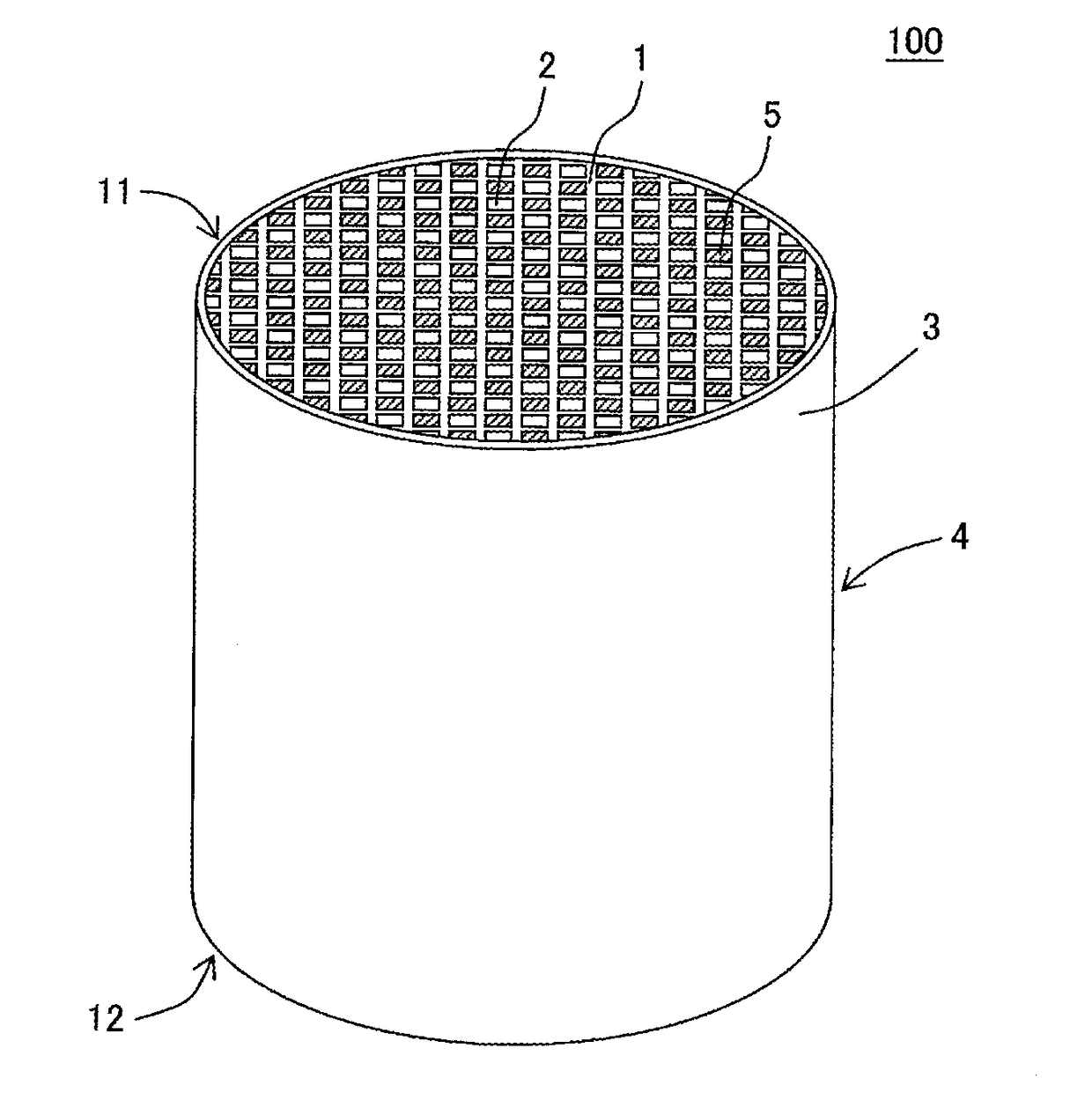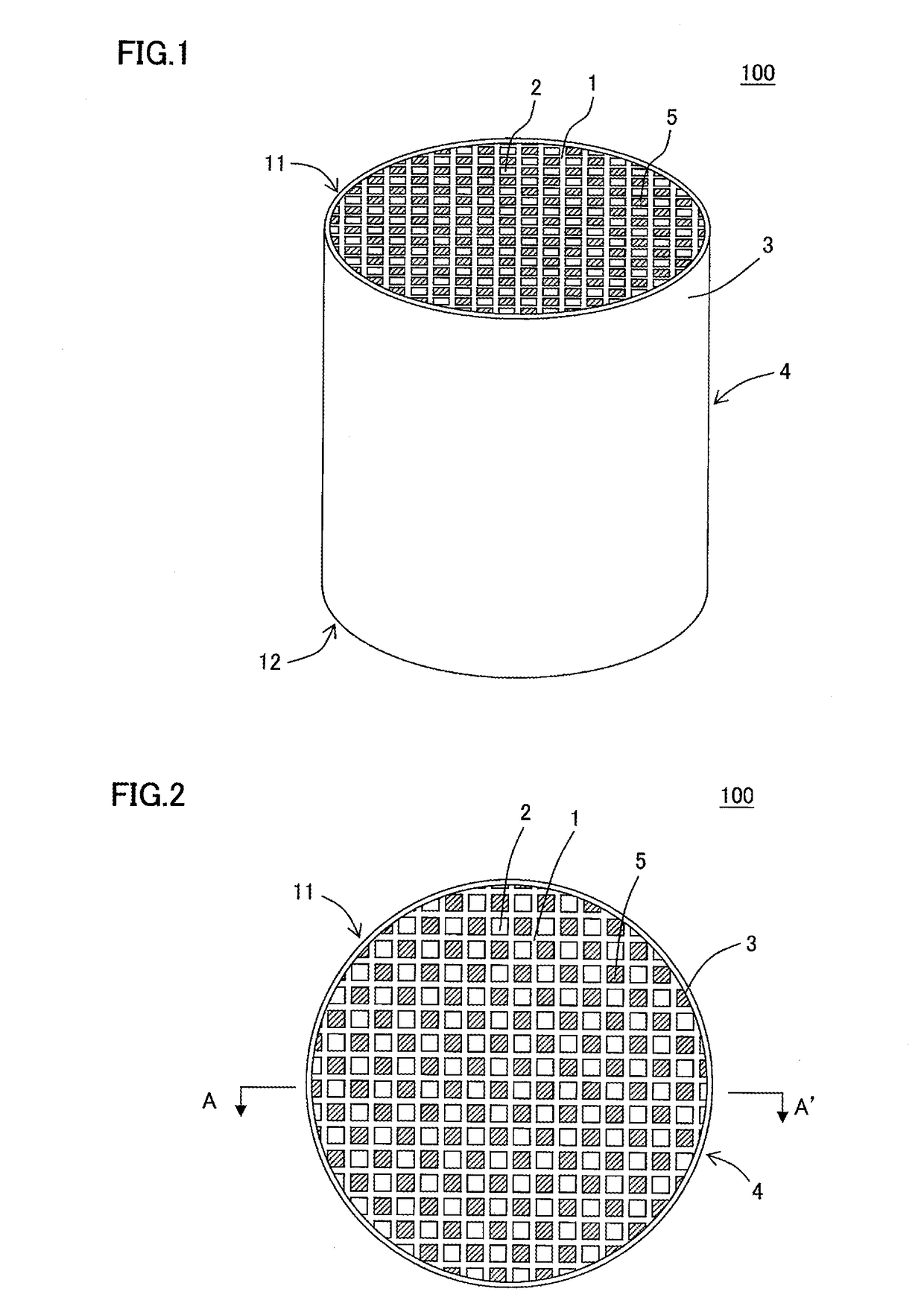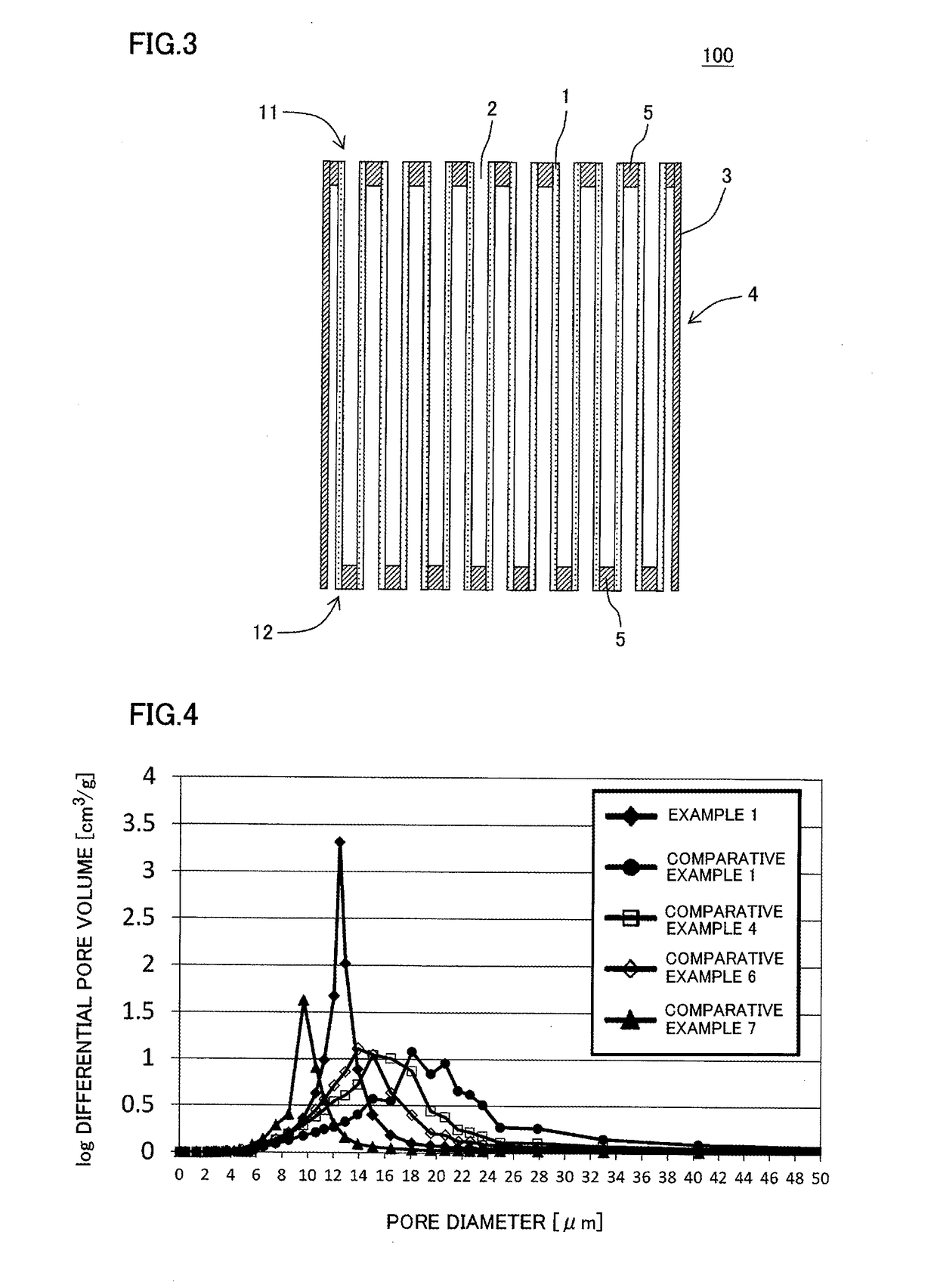Plugged honeycomb structure
a honeycomb and structure technology, applied in the field of plugged honeycomb structure, can solve the problems of affecting the performance of the trapping, the influence of the engine output drop, and the influence of the fuel consumption, so as to reduce the pressure loss increase ratio, excellent trapping performance, and effective trapping performance
- Summary
- Abstract
- Description
- Claims
- Application Information
AI Technical Summary
Benefits of technology
Problems solved by technology
Method used
Image
Examples
example 1
[0081]Silicon carbide (SiC) powder and metal silicon (Si) powder were mixed at a mass ratio of 80:20 to prepare a mixed raw material as raw material powder to prepare a kneaded material. An average particle diameter of the silicon carbide powder was 30 μm. An average particle diameter of the metal silicon powder was 4 μm. Additionally, in the present example, the average particle diameter of each raw material powder was measured by laser diffractometry.
[0082]6 parts by mass of a binder, 15 parts by mass of a pore former and 24 parts by mass of water were added to 100 parts by mass of the mixed raw material, to prepare a forming raw material for the preparation of the kneaded material. Methylcellulose was used as the binder. Starch having an average particle diameter of 15 μm was used as the pore former. Next, the obtained forming raw material was kneaded by using a kneader, to obtain the kneaded material.
[0083]Next, the obtained kneaded material was formed by using an extruder, to p...
examples 2 to 11
[0107]The procedure of Example 1 was repeated except that a thickness of partition walls, a porosity, an average pore diameter, a total pore volume and a pore volume ratio were changed as shown in Table 1, to prepare plugged honeycomb structures. The porosity, the average pore diameter and the like were adjusted by adjusting particle diameters and an amount of a pore former to be added to a forming raw material. For example, in Example 2, the forming raw material was prepared on the same conditions as in Example 1, except that the average particle diameter of the pore former was 15 μm and the amount of the pore former to be added was 20 parts by mass. Furthermore, as to Example 3 and others, the forming raw material was prepared by adjusting the amount of the pore former to be added (corresponding to “the amount of the pore former (mass %)” in Table 3) as shown in Table 2.
TABLE 3Total pore volumeAmount of pore former[cm3 / g][mass %]Example 10.29415Example 20.31820Example 30.30818Exam...
PUM
| Property | Measurement | Unit |
|---|---|---|
| porosity | aaaaa | aaaaa |
| thickness | aaaaa | aaaaa |
| pore diameters | aaaaa | aaaaa |
Abstract
Description
Claims
Application Information
 Login to View More
Login to View More - R&D
- Intellectual Property
- Life Sciences
- Materials
- Tech Scout
- Unparalleled Data Quality
- Higher Quality Content
- 60% Fewer Hallucinations
Browse by: Latest US Patents, China's latest patents, Technical Efficacy Thesaurus, Application Domain, Technology Topic, Popular Technical Reports.
© 2025 PatSnap. All rights reserved.Legal|Privacy policy|Modern Slavery Act Transparency Statement|Sitemap|About US| Contact US: help@patsnap.com



